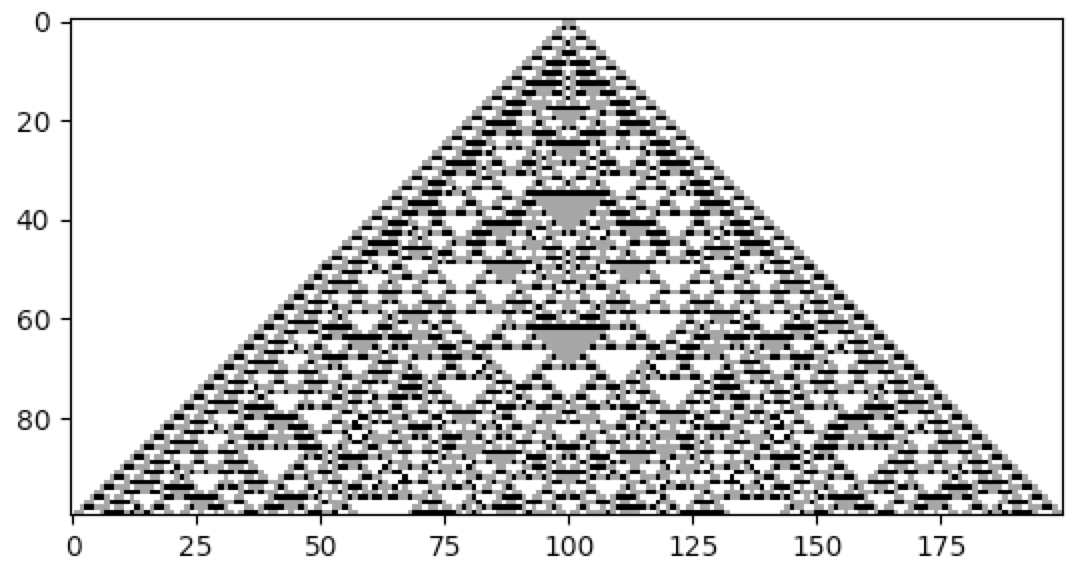Varying the Number of Colors
The number of states, or colors, that a cell can adopt is given by k. For example, a binary cellular automaton, in
which a cell can assume only values of 0 and 1, has k = 2. CellPyLib supports any value of k. A built-in function,
totalistic_rule(), is an implementation of the Totalistic cellular automaton rule, as
described in Stephen Wolfram’s A New Kind of Science. The code snippet below illustrates using this rule. A value of
k of 3 is used, but any value between (and including) 2 and 36 is currently supported. The rule number is given in
base 10 but is interpreted as the rule in base k (thus rule 777 corresponds to ‘1001210’ when k = 3).
import cellpylib as cpl
cellular_automaton = cpl.init_simple(200)
# evolve the CA, using totalistic rule 777 for a 3-color CA
cellular_automaton = cpl.evolve(cellular_automaton, timesteps=100,
apply_rule=lambda n, c, t: cpl.totalistic_rule(n, k=3, rule=777))
cpl.plot(cellular_automaton)

Alternatively, the TotalisticRule class can be used:
cellular_automaton = cpl.evolve(cellular_automaton, timesteps=100,
apply_rule=cpl.TotalisticRule(k=3, rule=777))
References:
Wolfram, S. (2002). A New Kind of Science. Champaign, IL: Wolfram Media.